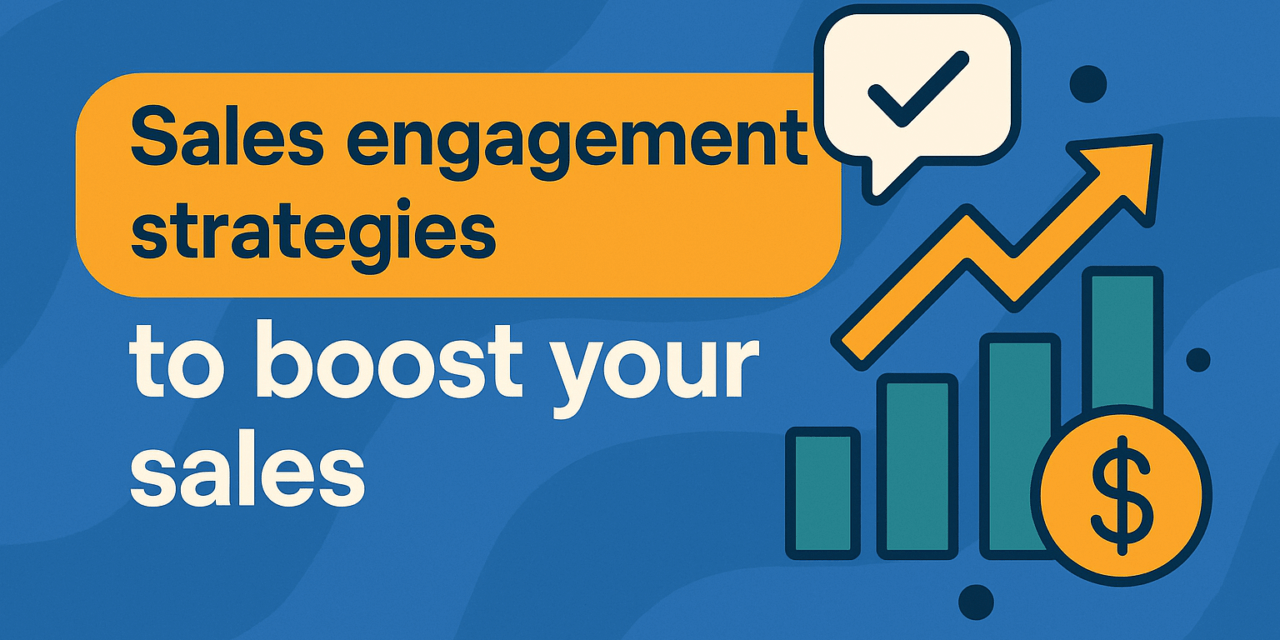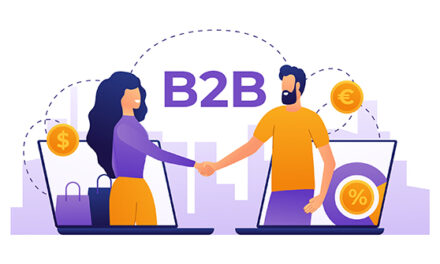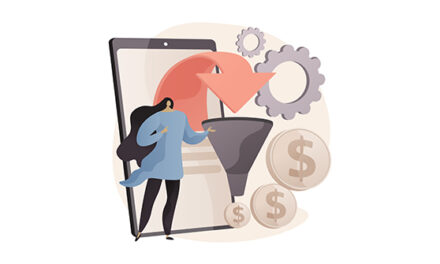Key Takeaways
- Sales engagement requires a personalized, multi-channel approach instead of one-size-fits-all outreach.
- AI and automation tools help sales teams scale personalization, reduce manual tasks, and improve efficiency.
- Strong alignment between sales and marketing ensures consistent messaging and better lead nurturing.
- Data-driven workflows and conversation intelligence give sales teams deeper insights into buyer behavior.
- Account-based engagement and continuous coaching strengthen relationships and drive higher B2B win rates.
B2B buyers are more informed, self-reliant, and harder to reach than ever before.
In fact, Gartner reports that buyers spend just 17% of their purchasing journey meeting with suppliers. This means most decisions are made before your sales team even enters the picture.
That’s where sales engagement strategies come in. In 2026, engaging prospects isn’t about sheer volume, it’s about delivering the right message, at the right time, through the right channel.
In this article, we’ll walk through 10 actionable strategies that help B2B teams boost engagement, shorten sales cycles, and increase conversions.
- 1. Personalize outreach at scale with AI
- 2. Implement multi-channel engagement
- 3. Align sales and marketing for unified messaging
- 4. Leverage video for sales engagement
- 5. Adopt a data-driven sales engagement workflow
- 6. Use sales engagement platforms for efficiency
- 7. Enable conversation intelligence
- 8. Prioritize account-based engagement for B2B sales
- 9. Automate routine tasks to focus on relationships
- 10. Continuously train and coach sales reps
- Conclusion
- Frequently asked questions
1. Personalize outreach at scale with AI
Personalization goes far beyond using a prospect’s first name. Buyers expect you to understand their business challenges and provide tailored solutions.
How to execute it:
- Use AI-powered CRM marketing automation examples to track buyer behavior (website visits, email opens, demo requests) and send customized follow-ups.
- Segment prospects by role, industry, and buying stage, and build personalized cadences for each segment.
- Automate dynamic email content that changes based on customer data (like showing different case studies to healthcare vs. retail prospects).
Real-world example: A B2B SaaS company might send finance leaders ROI calculators while targeting IT leaders with technical documentation, all through AI-driven automation.
Impact: Higher open rates, improved reply to rates, and stronger brand trust because prospects feel understood.
2. Implement multi-channel engagement
Sticking to just email or calls is no longer enough. Buyers switch between platforms; your outreach should too.
How to execute it:
- Create marketing automation workflow examples that incorporate email, LinkedIn interactions, phone calls, and even WhatsApp/SMS messages.
- Repurpose content: A LinkedIn post can serve as a conversation starter in your outreach emails.
- Utilize automated reminders to re-engage prospects who initially interacted on one channel but became inactive on another.
Real-world example: A sales rep sends a personalized LinkedIn video, follows up with an email linking to relevant blog posts, and closes the loop with a phone call to secure a meeting.
Impact: Multi-channel engagement increases visibility, improves brand recall, and meets buyers where they are most comfortable.
3. Align sales and marketing for unified messaging
Sales and marketing often misalign; marketing generates leads that sales consider “low quality,” while sales requests insights that marketing can’t provide. This disconnect confuses buyers.
How to execute it:
- Sync CRM systems so sales can see how a lead engaged with past campaigns.
- Build joint playbooks that outline the process for when a lead transitions from marketing to sales.
- Share analytics from b2b marketing automation examples so both teams understand which campaigns generate revenue, not just leads.
Real-world example: A SaaS company ensures that every lead who downloads a whitepaper (marketing touchpoint) receives a sales call tailored to that topic.
Impact: Consistent messaging across touchpoints builds credibility and reduces friction in the sales cycle.
4. Leverage video for sales engagement
Video makes sales reps more human and memorable. Buyers are more likely to respond to a face and voice than text alone.
How to execute it:
- Send short intro videos instead of cold email walls of text.
- Record demo recaps for absent stakeholders to ensure the decision-making unit stays aligned.
- Use marketing automation campaign examples to embed product videos in nurture flows.
Real-world example: A representative at a manufacturing software company sends a personalized 90-second video to plant managers, showing how the solution addresses downtime issues.
Impact: Video increases engagement, improves meeting bookings, and accelerates trust-building.
5. Adopt a data-driven sales engagement workflow
Guesswork no longer works. Every decision should be rooted in data, ensuring efforts focus on strategies that yield results.
How to execute it:
- Track engagement metrics like email open rates, call-to-meeting ratios, and proposal acceptance rates.
- Use marketing automation system examples to see which content types (case studies, blogs, webinars) drive conversions also you can use ugc-ad-makers to do this in a effective way.
- Continuously test subject lines, outreach times, and messaging styles to optimize workflows.
Real-world example: A B2B agency finds out, through CRM data, that CFOs respond best to emails sent on Tuesdays at 9 a.m.—so they restructure outreach cadences accordingly.
Impact: Data-driven insights eliminate wasted effort and increase the predictability of sales outcomes.
6. Use sales engagement platforms for efficiency
Managing outreach manually is both time-consuming and prone to errors. Engagement platforms simplify and automate key processes.
How to execute it:
- Automate repetitive tasks like follow-ups, meeting scheduling, and reporting.
- Use centralized dashboards to manage all sales channels (calls, SMS, email).
- Create standardized cadences to enable new representatives to onboard quickly and maintain consistency.
Real-world example: A B2B firm using Salesmate automates email cadences and reminders, freeing reps to focus on closing.
Impact: More efficiency, faster scaling, and fewer opportunities slipping through the cracks.
7. Enable conversation intelligence
Different types of sales calls reveal valuable insights, from the questions buyers ask to the objections they raise and how they respond to your pitch.
How to execute it:
- Deploy AI-driven call recording and transcription tools.
- Train reps use insights like which phrases build trust and which one’s trigger objections.
- Use competitor mentions from calls to refine battle cards.
Real-world example: A cybersecurity sales team discovered “compliance support” was a recurring concern across calls. They updated their pitch and increased win rates by 18%.
Impact: Smarter conversations, better objection handling, and stronger training for sales teams.
8. Prioritize account-based engagement for B2B sales
High-value deals usually involve multiple stakeholders. Traditional lead-focused strategies fall short.
How to execute it:
- Map the buying committee (finance, IT, operations) and engage each with tailored messaging.
- Develop examples of marketing automation to deliver account-specific campaigns.
- Align outreach cadence so that multiple representatives can simultaneously engage with different stakeholders.
Real-world example: A SaaS company targeting Fortune 500 firms creates separate sequences for CIOs, CFOs, and operations managers—all personalized but coordinated.
Impact: Stronger influence within key accounts, higher deal values, and faster consensus among decision-makers.
9. Automate routine tasks to focus on relationships
Sales reps spend only 28% of their time selling (Forrester). Admin tasks swallow the rest.
How to execute it:
- Automated meeting scheduling through integrated calendars.
- Trigger welcome emails, onboarding flows, and follow-ups using crm integration.
- Run abandoned cart or re-engagement campaigns for b2c marketing automation examples.
Real-world example: A jewelry eCommerce company automates re-engagement emails for inactive customers, reducing churn by 15%.
Impact: More time spent on human interactions, stronger relationships, and higher customer loyalty.
10. Continuously train and coach sales reps
Technology helps, but people close deals. Ongoing coaching ensures reps adapt to new tools, buyer behaviors, and selling techniques.
How to execute it:
- Run role-play sessions simulating complex buyer objections.
- Use conversation intelligence recordings for personalized coaching.
- Train reps on using marketing automation tools examples effectively.
Real-world example: A SaaS firm runs monthly coaching sessions using recorded calls. Within three months, objection-handling improved, and closing rates increased by 20%.
Impact: Better-prepared reps, consistent sales execution, and long-term growth.
Conclusion
Sales engagement is no longer about quantity; it’s about quality, timing, and personalization.
By adopting AI-driven personalization, multi-channel outreach, and account-based engagement, sales teams can create stronger, more meaningful connections with prospects.
Automation helps eliminate repetitive tasks, allowing reps to focus on building relationships that truly drive revenue. Meanwhile, conversation intelligence and continuous training ensure long-term growth and adaptability.
The future belongs to teams that adopt these strategies and transform every interaction into an opportunity to build trust and secure deals.
Frequently asked questions
1. What are examples of marketing automation in sales engagement?
They include automated lead scoring, personalized email campaigns, meeting scheduling, and abandoned cart recovery.
2. What is the best example of marketing automation software for B2B?
Salesmate, HubSpot, and ActiveCampaign are top picks. Salesmate stands out for crm marketing automation examples that unify sales, marketing, and support.
3. How can marketing automation workflows improve engagement?
They free reps from repetitive tasks, nurture leads with relevant content, and ensure timely follow-ups.
4. What are the benefits of CRM integration for sales engagement?
It centralizes customer data, aligns sales and marketing, and enables more personalized outreach.
5. Is sales engagement only for large enterprises?
No. SMBs can utilize B2C marketing automation examples, such as welcome emails or re-engagement campaigns, to foster stronger customer relationships.




